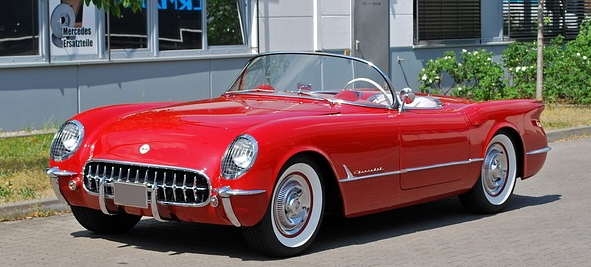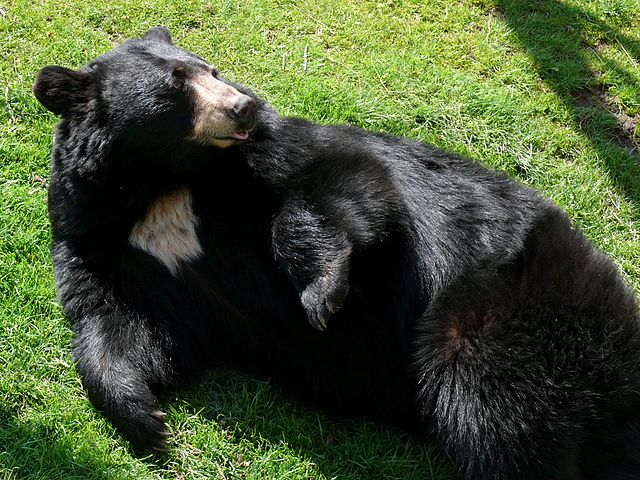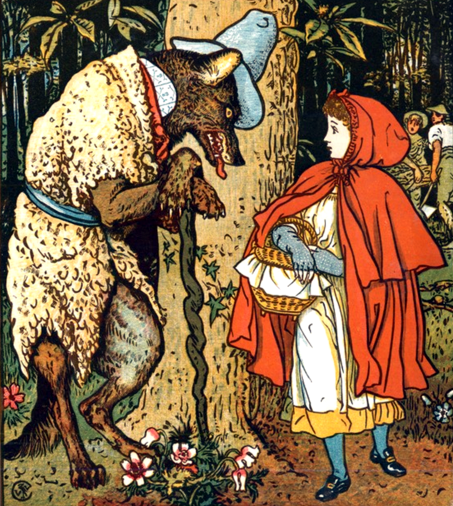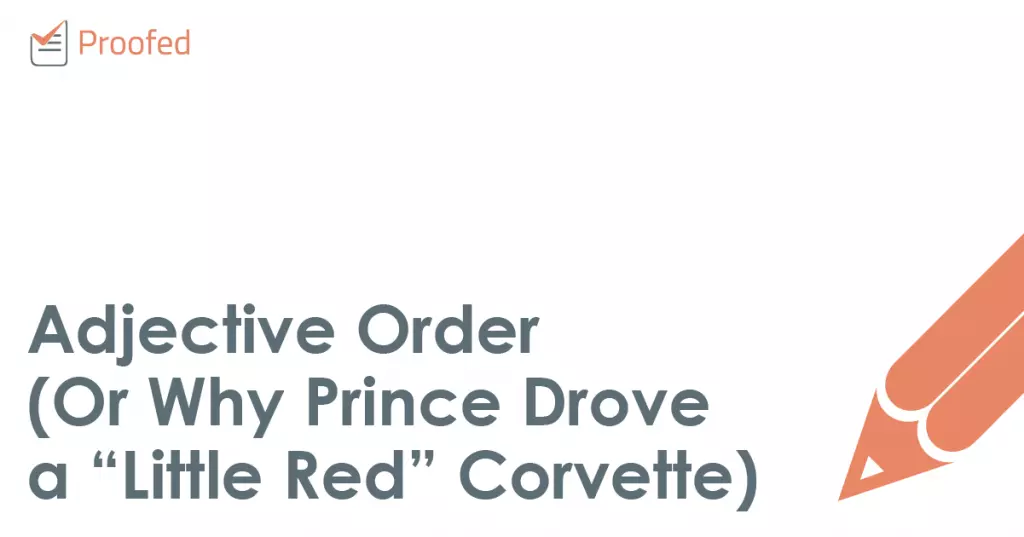Prince’s “Little Red Corvette” has a very catchy chorus. That much is beyond doubt. But while this song was stuck in our collective head at Proofed (we share one head to save on expenses), we started wondering: Why is it “Little Red Corvette” and not “Red Little Corvette”?

The answer to this isn’t just “Because it sounds better” (although that’s true). It’s also to do with the rules about adjective order, so join us on a grammatical journey as we explain what this means.
Understanding Adjective Order
Adjective order refers to the conventional order of adjectives in English. The standard order is:
- Quantity (e.g., “two eggs”)
- Value/Opinion (e.g., “a good day”)
- Size (e.g., “a narrow gap”)
- Physical quality or shape (e.g., “a smooth surface”)
- Age (e.g., “an ancient secret”)
- Color or shade (e.g., “pink flamingos”)
- Origin/Nationality (e.g., “the Canadian flag”)
- Material (e.g., “a glass eye”)
- Type/Purpose (e.g., “a juggling ball”)
It would be unusual to use all these adjective types at once (this may be why Prince didn’t call his song “One Brilliant Little Old Shiny Red American Steel Racing Corvette”). But adjective order is important whenever you use more than one word to modify a noun, so it’s worth understanding.
A good guideline is that the more important a word is for describing something, the closer it should go to the noun. That is why we’d say “a red sports car” and not “a sports red car” (i.e., because the type of car is more important than its color for understanding what it is).
What Type of Adjective Is It?
Imagine you’re out in the woods somewhere and you’re confronted by an American black bear. Once you’ve got to safety and panic has subsided, you’d probably think: “Wait! I know the rules of adjective order. Shouldn’t that be ‘black American bear’? Color comes before nationality, right?”
Find this useful?
Subscribe to our newsletter and get writing tips from our editors straight to your inbox.
The issue here is that “black bear” is a compound noun (i.e. a noun made up of two words that are conventionally used together). As such, “black” actually specifies the type of bear, not just its color. And since type is more important than nationality, “black” goes nearer “bear.”

(Photo: Ken Thomas)
With compound words like this, you may therefore have to think about what each adjective is doing in context. This will give you a better sense of its correct position than the dictionary definition alone.
The Big Bad Wolf and Other Exceptions

Finally, we should admit that the rules of adjective order do not always apply. The most famous example of this is the Big Bad Wolf from Little Red Riding Hood. Going by the adjective order suggested above, “bad” (a value/opinion) should come before “big” (a physical quality).
But if we say Bad Big Wolf, it immediately sounds wrong. This is because we tend to put “i” before “a” when repeating a consonant sound (something called reduplication). So just as “zig zag” sounds more natural than “zag zig,” Big Bad Wolf sounds more natural than Bad Big Wolf.
As such, if you’re unsure about adjective order, try saying the words out loud to see if they sound right. You could even ask a friend if you’re still not sure!



